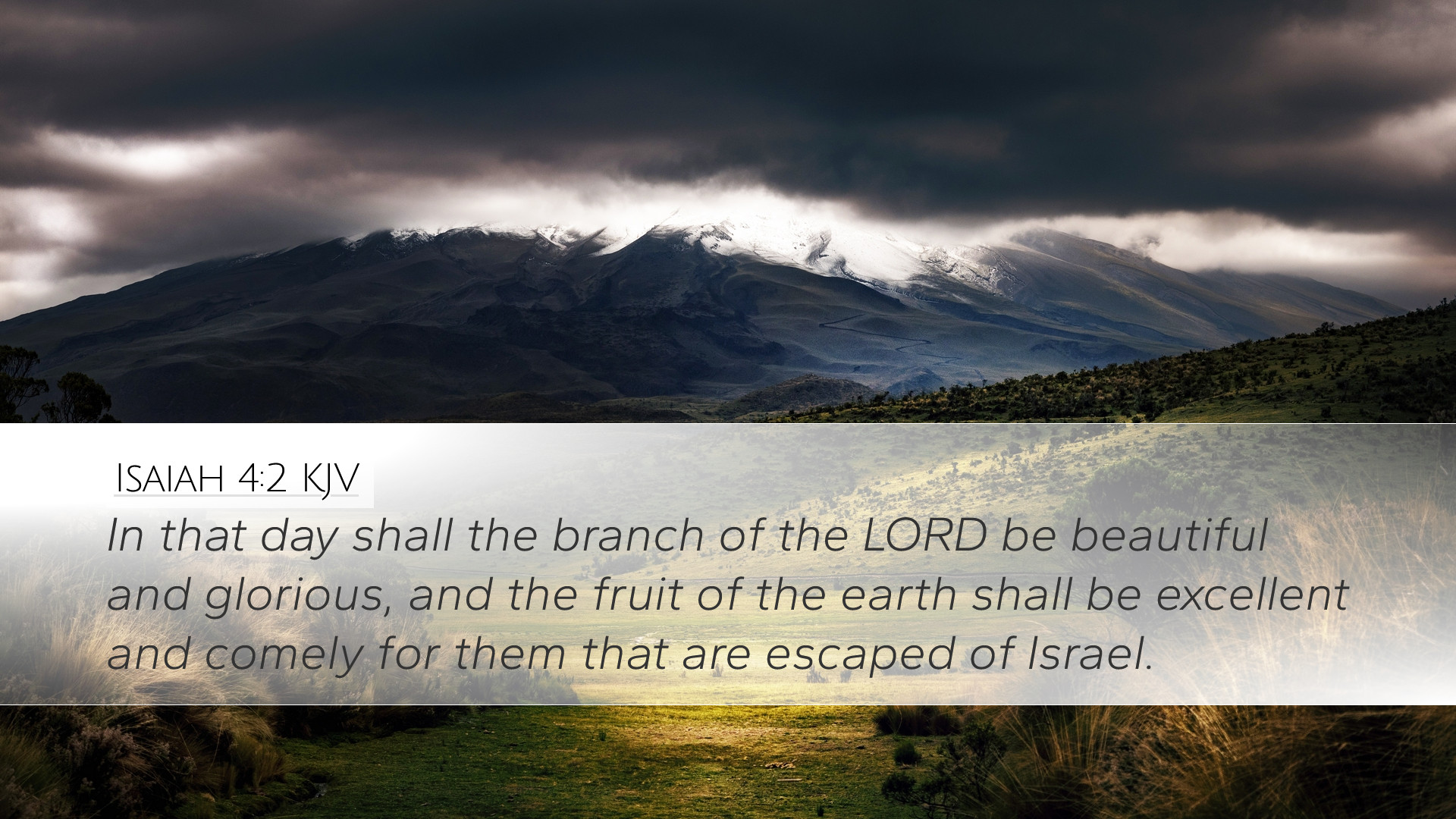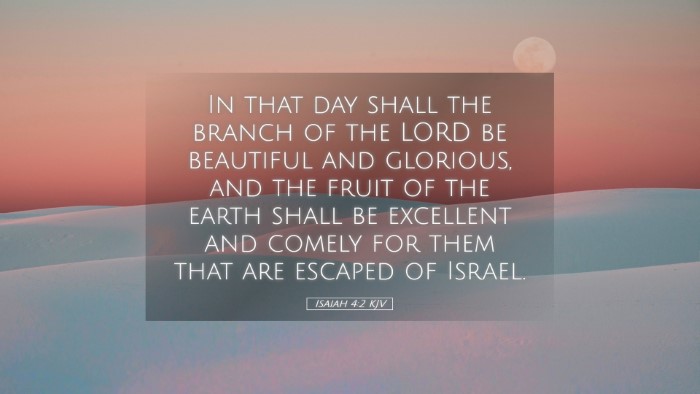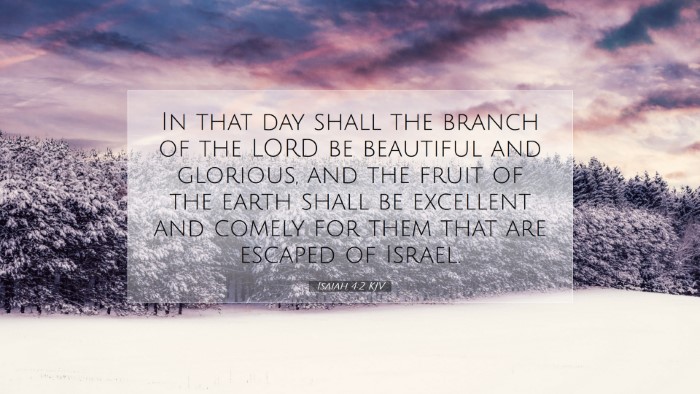Commentary on Isaiah 4:2
Text of Isaiah 4:2: "In that day the branch of the Lord shall be beautiful and glorious, and the fruit of the earth shall be excellent and comely for them that are escaped of Israel."
Introduction
The verse from Isaiah 4:2 encapsulates a vision of hope and restoration that resonates deeply within the prophetic literature of the Old Testament. This commentary will explore the implications of this passage, drawing from the insights of renowned public domain commentators including Matthew Henry, Albert Barnes, and Adam Clarke.
Contextual Understanding
This verse emerges from the context of judgment and eventual restoration. Isaiah prophesies amidst a time of great turmoil and impending judgment on Judah. The "day" referred to signifies a future time when God’s deliverance will be evident, demonstrating His covenant faithfulness.
Matthew Henry's Insights
Matthew Henry provides a rich exposition on the significance of "the branch of the Lord." He interprets this phrase as pointing to the Messiah, who is often depicted in Scripture as a branch — a symbol of new growth and life (Isaiah 11:1). Henry emphasizes that this branch will be "beautiful and glorious," denoting not merely aesthetic appeal but a profound fulfillment of spiritual and physical prosperity.
Albert Barnes' Analysis
Albert Barnes highlights the distinction between the “branch of the Lord” and the remaining remnant of Israel. Reflecting on the phrase "fruit of the earth," Barnes suggests that the restoration promised by Isaiah will result in abundant blessings for those who return to God. He sees this as an assurance that the land, once devastated by judgment, will once again yield bountiful fruits that will be "excellent and comely." Barnes stresses that this renewal symbolizes both spiritual revival and material blessings following a period of trial.
Adam Clarke's Perspective
Adam Clarke elaborates on the figurative language used in this passage. He notes that the “branch” can be seen as emblematic of the Messianic age, where Christ, as the true vine (John 15), will bring forth fruits of righteousness in the lives of believers. Clarke adds that the emphasis on beauty and glory connects to the idea that the restored community will reflect God's splendor, aligning with the overarching themes of holiness and divine favor that characterize Isaiah’s prophecies.
Theological Implications
Isaiah 4:2 presents profound theological themes relevant for pastors, theologians, and scholars alike:
- Messianic Expectation: The reference to the “branch of the Lord” underscores a critical component of messianic prophecy, pointing toward Jesus Christ who fulfills these expectations through His life and ministry.
- Restoration after Judgment: The verse encapsulates the dynamic nature of God’s relationship with His people, illustrating that despite judgment, there is always a prospect of restoration and renewal.
- Beauty in God's Creation: The description of the branch being “beautiful and glorious” invites a reflection on the aesthetic dimensions of life under God's reign. It suggests that in God's kingdom, spiritual beauty is as vital as physical flourishing.
- Hope for the Remnant: The promise that the fruit will be “excellent and comely” highlights God's special concern for the remnant — those who remain faithful amidst adversity. This is a recurring theme in the prophetic writings, providing consolation to believers in difficult times.
Practical Applications
As modern-day readers engage with Isaiah 4:2, several applications emerge:
- Faith in Divine Restoration: Believers are encouraged to trust in God's power to restore and beautify their lives, communities, and circumstances, even when faced with trials.
- Messianic Hope: This verse can be a powerful reminder of the hope believers have in Christ, acknowledging His role as the fulfillment of God’s promises.
- Community and Worship: Emphasizing the beauty of holiness, congregations are called to cultivate a culture of worship that reflects the glory of God seen in the transformed lives of His people.
- Stewardship of Creation: The mention of “fruit of the earth” invites believers to consider their role in stewarding creation, engaging in practices that promote environmental care and sustainability as acts of obedience to God.
Conclusion
Isaiah 4:2 stands as a beacon of hope and a declaration of God's faithfulness. It not only foreshadows the coming of the Messiah but also reassures the faithful of the extravagant blessings that stem from God’s redemptive work. The insights gleaned from the commentaries serve to deepen our understanding and appreciation of the rich theological and practical implications contained within this single verse. Reflecting on these themes, may we embrace the beauty and glory of God’s restorative plan in our lives and communities.


